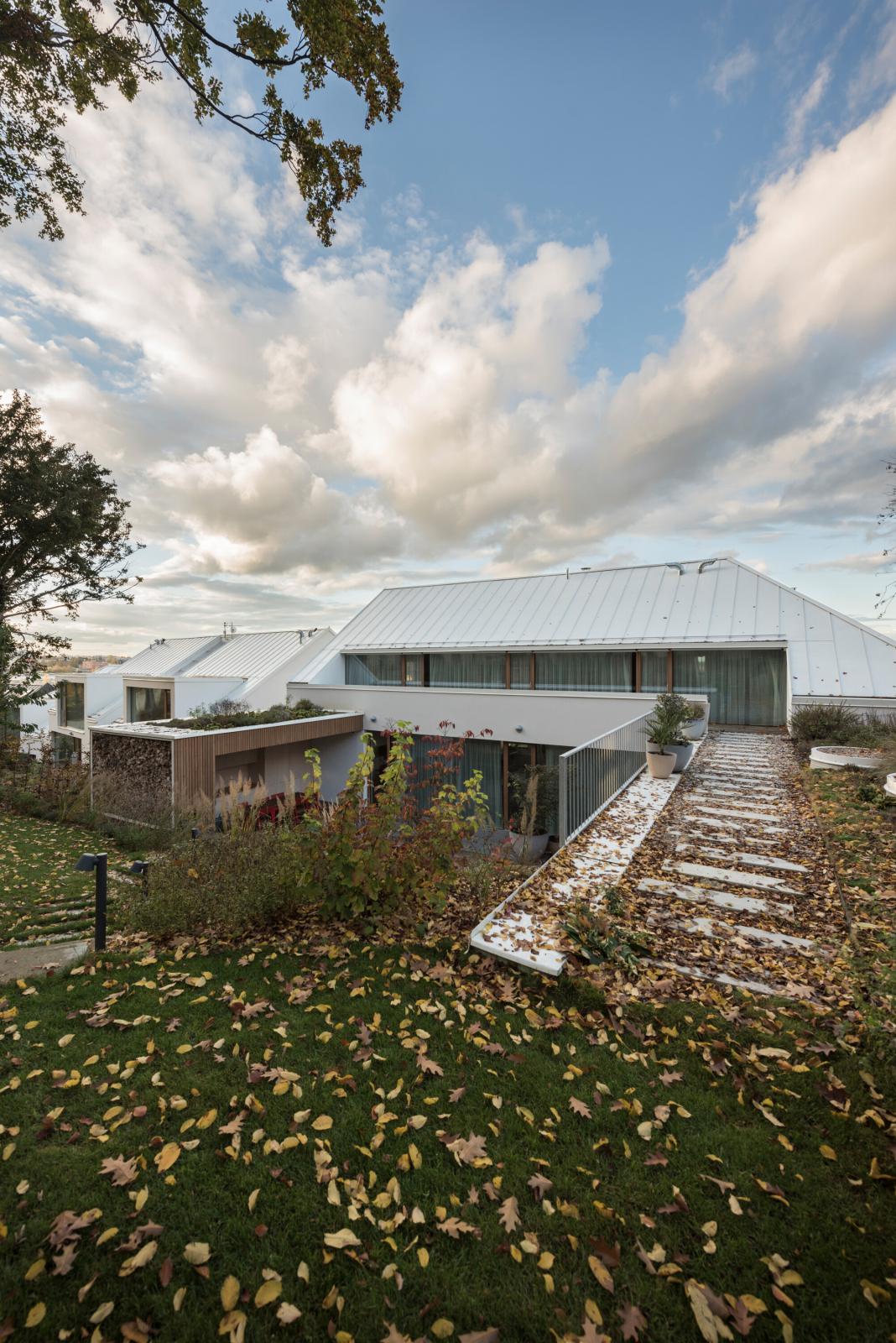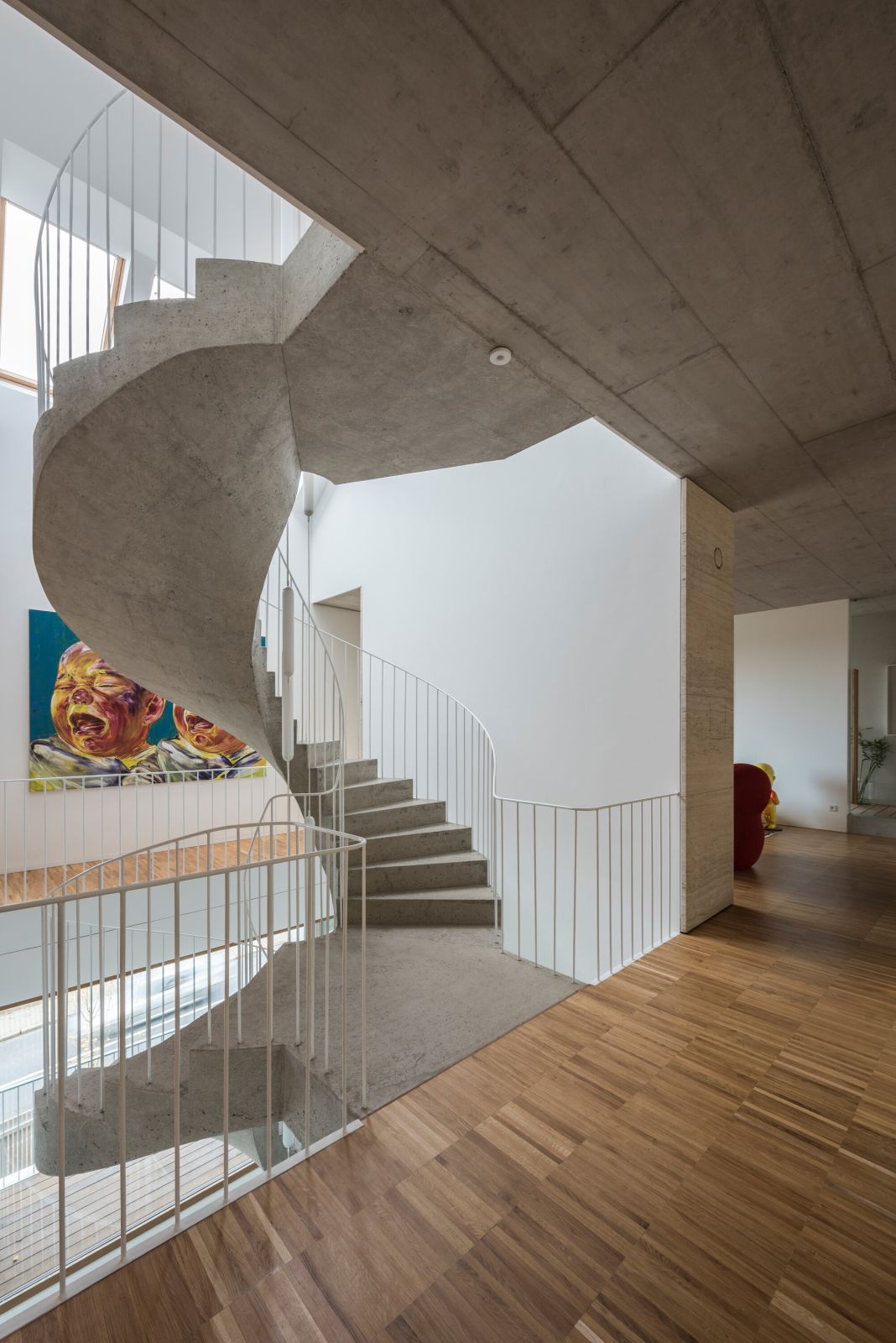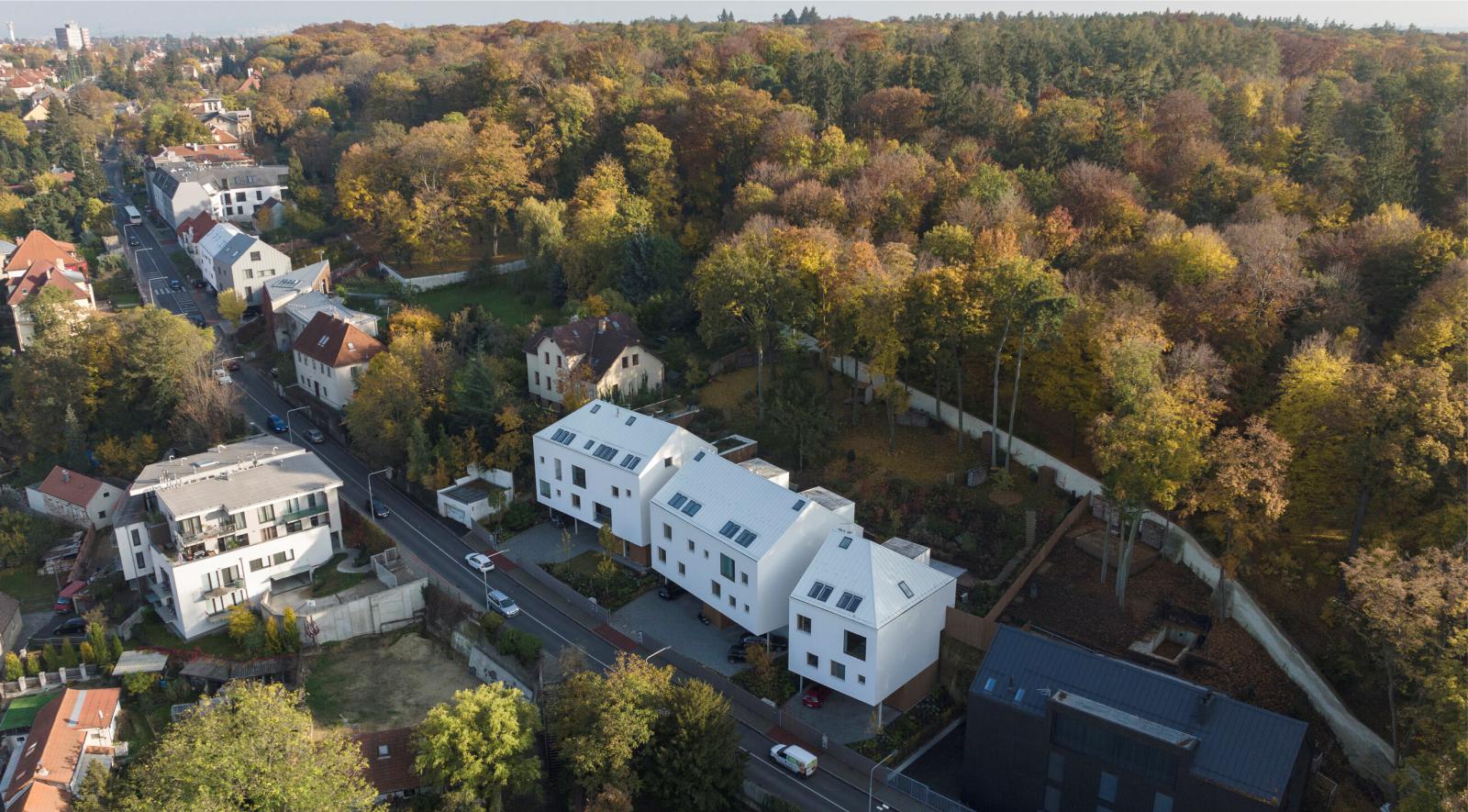From the south side it is defined by fragmented original terraced housing supplemented by the remains of grand suburban villas from the late 19th century. Its northern edge is formed in part of its length by a terrain break and a downward slope.
Just above the point where the street turns and slopes sharply towards the church of St. Fabian and Sebastian in Liboc. The height difference between the street and the base of the Star Nature Reserve wall that encloses it on the south side is as much as fourteen metres, as a near-vertical sandstone cliff between eight and ten metres high divides the land about halfway down.

The position of the houses was based on a desire to appropriately complete the existing fabric and composition of buildings in an area that has a rural character, with houses winding along the street and following the terrain’s contours. The proposed triplet of houses reflects the usual local forms in its shape, size and roofs with the ridges oriented parallel to the street.
The prominent presence of the exposed sandstone mass is a determining factor in the positioning of the buildings in relation to each other and with regard to the overall urban design – as has been common in the formation of rural settlements throughout history.

The individual houses are rotated in relation to each other and respond to the rock wall that backs them to the south. Through a gradual dialogue with clients and the authorities, the minimalist form of the houses has emerged. The roofs of the two outermost houses were designed as hipped to soften the overall mass.
A rock wall is visible through the widening partitions between the buildings. The forefront of the buildings towards the street has a more urban character (stone paving, newly planted trees), while the steeply sloping garden on the cliff above the houses is more wild and makes use of the original mature vegetation. It is bounded by the wall of the Star Game Reserve.

All three buildings are visually elevated one storey above ground floor level; white archetypal abstracted masses thus visually float above the smaller in footprint and materially differentiated ground floor. A combination of plain white lime plaster, natural timber, white perforated corrugated sheet metal and glazing is used.
These materials are further complemented on the exterior with galvanised steel details and grey painted timber street fencing. The elevated position in the landscape, with one entire living floor in contact with the rock wall, and the range of views of Liboc and the Šárka rocks in the distance meant that windows were needed facing north, onto the busy narrow street to frame these views.

All three structures have two regular residential floors and an attic. The bottom floor serves as the entrance for both houses, while the middle apartment building has common facilities and access to the central exterior staircase, which, together with the elevator, serves the entrance floors of the residential units – two duplexes and two penthouses.
The investor’s family villa is characterised by a different of the garden area, where the main house accompanied by the volumes of an indoor pool and an outdoor kitchen with vegetated roofs defining a terrace between them. Essential elements of all the houses are their staircases. In the client’s house, it is a spiral monolithic reinforced concrete staircase connecting all floors and allowing a vertical view through the entire house.

This in-situ staircase was conceived as a massive sculpture with significant presence, visible also from the street through the glazing of one of the two loggias on the facade. It is complemented by an extremely subtle handrail made of bent, welded and lacquered white bar steel. A lightweight, white-painted steel staircase with a subtle welded zig-zagging structure runs through the smaller family house for a change.
The buildings were executed as a predominantly monolithic reinforced concrete structure with exposed bottom face of the ceiling slabs, combined with steel columns. Heating is provided by air-to-water heat pumps, and hot-water floor heating. All buildings are equipped with ventilation with heat recovery and air conditioning. All three houses were built in passive standard as exceptionally energy-efficient. Source by martin cenek architecture.

- Location: Libocka Street, Prague, Czech Republic
- Architect: martin cenek architecture
- Structural engineer: František Denk
- Plumbing: Tomáš Balažovič
- HVAC: Ondřej Zikán
- Electrical: Petr Bürger
- Fire protection: Jindřiška Hüttnerová
- Landscape: Tomáš Sklenář
- Built-up area: 716 m2
- Gross floor area: 1910 m2
- Usable floor area: 1396 m2
- Completion year: 2022
- Photographs: Martin Cenek, Courtesy of LINKA










